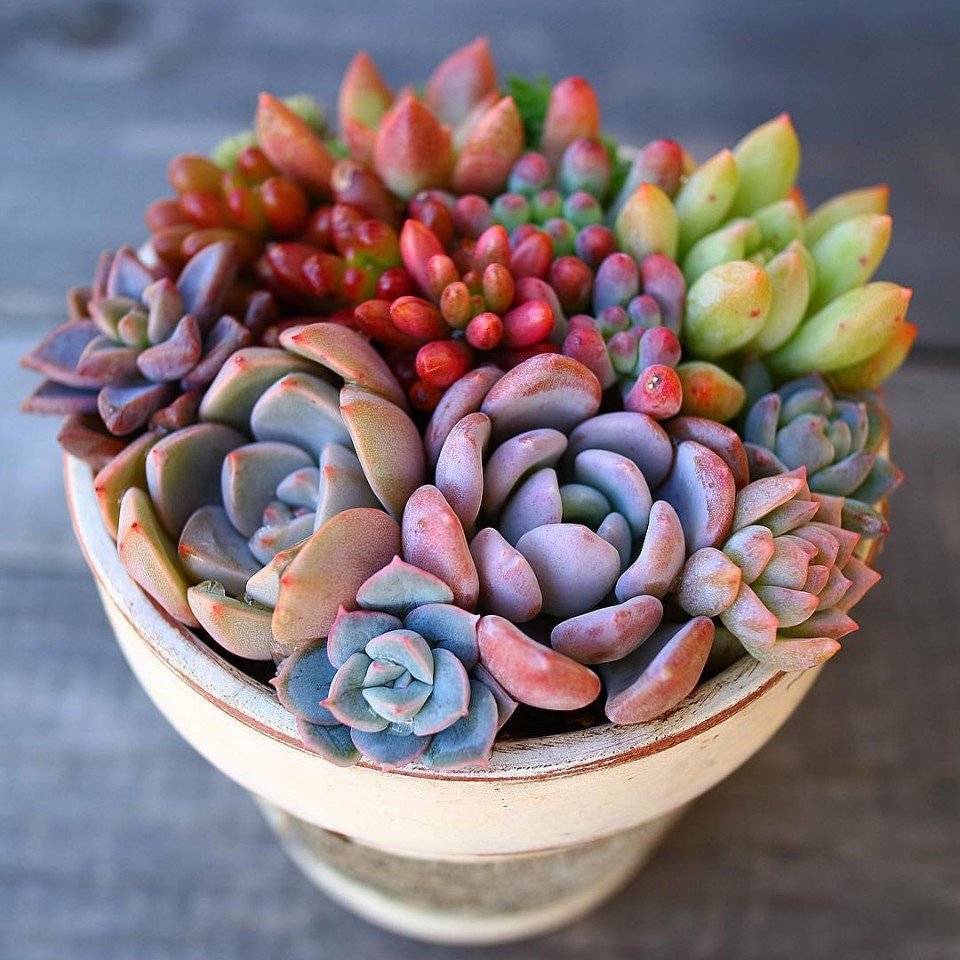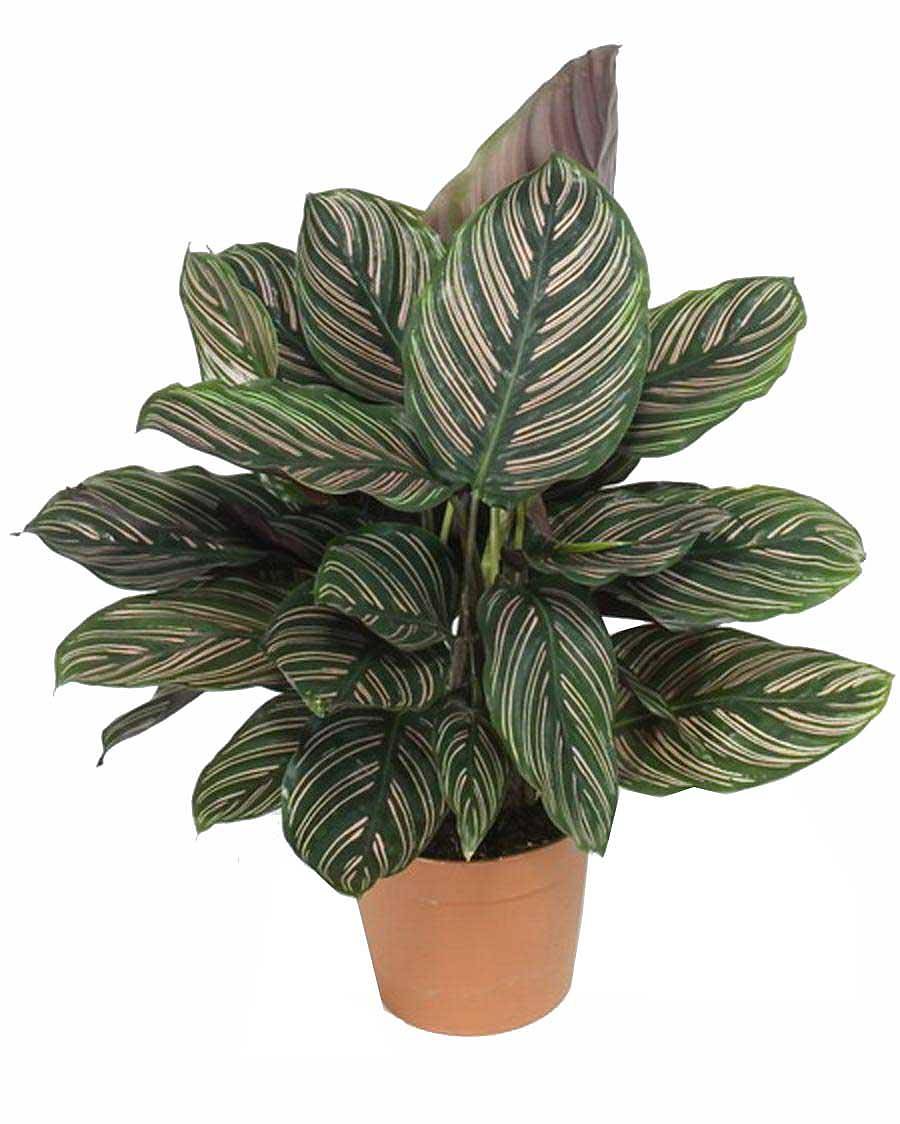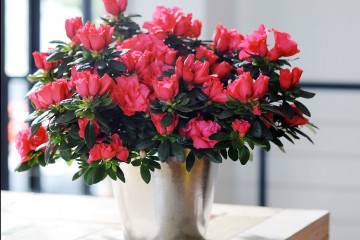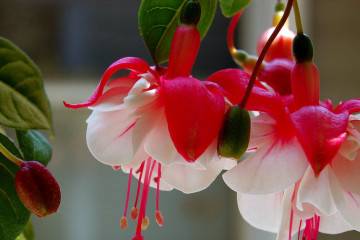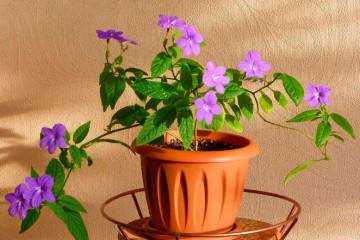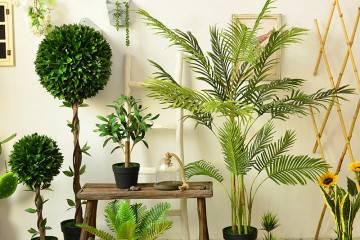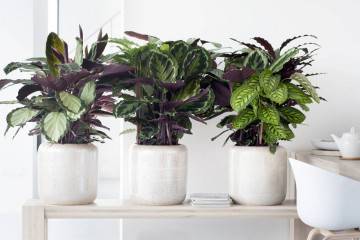Decorative deciduous indoor plants
Content:
- Decorative deciduous indoor plants
- Groups of decorative deciduous plants
- Classification of ornamental deciduous plants by temperature conditions
- Classification of decorative deciduous plants by air humidity
- Classification of decorative deciduous plants by illumination
- The use of ornamental foliage plants for interior decoration
The interior of an apartment or office, a public institution is noticeably transformed if it contains unusual flowers in pots. We are not talking about those that bloom with fragrant flowers, but about those whose foliage is striking in its beauty. These are decorative deciduous indoor plants. Below we consider what groups of deciduous flowers are and what conditions they should create for maximum manifestation of decorative properties.
Decorative deciduous indoor plants
Plants with bizarrely colored or cut leaves are mostly from hot countries with tropical and subtropical climates. It is advisable to grow perennials at home. They rarely bloom, usually 5 or more years after planting. Flowers are often inconspicuous, small. Seeds are rarely formed, ripen for a long time, are colored black, have a hard shell.
Indoor plant classification
Depending on the life form, decorative deciduous crops are subdivided into:
- herbs;
- shrubs, shrubs and shrubs;
- trees.
Herbaceous plants, in turn, are subdivided into leafy, leafy, climbing plants. In addition, plants are grouped in relation to environmental factors, belonging to groups and species with a characteristic structure of leaves and shoots.
Appearance and leaves of ornamental deciduous plants
Aesthetic qualities are formed by the following characteristics of the leaves:
- shape and thickness;
- the degree of dissection;
- coloring;
- the nature of the surface is glossy or matte.
In addition, designers combine decorative deciduous plants with drooping or erect rosettes.
Groups of decorative deciduous plants
Here are the main groups that unite one or more botanical species of ornamental foliage crops.
Ferns
A group of the oldest plants on Earth, in nature, form dense thickets in the undergrowth of humid forests. Small emerald-colored leaves are arranged in rows on tall shoots that can droop. The variety of ferns includes: Nephrolepis, Maidenhair (curly fern), Cretan and xiphoid Pteris, Round-leaved, ovoid, glabrous pellea. The epiphytic fern is Davallia, which forms aerial roots. In nature, they are needed to cling to trees, which are the "home" for the fern. Often confused with a palm tree is the view of the Blehnum fern. The shoots of this plant can reach a height of 1 m.
Palm trees
Palms are a large group of plants adapted to a wide range of conditions, from severely dry with full light to humid and shady. It is quite easy to grow them at home. The life form of palms is trees of various heights with a well-defined trunk, which can be densely covered with hairs.
For most palms to overwinter, it is necessary to lower the temperature and humidity of the environment. With the arrival of spring and summer, the optimum air temperature for them is 23-25 ° C. The most decorative are washingtonia filamentous, Canary date, Fortune trachikarpus.
Ampel plants
Ampel plants - weaving or lianas, which are very popular for creating decorative green walls. Ivy are unpretentious and shade-tolerant, do not require abundant watering, they clean indoor air well. Tradescantia are traditional and very unpretentious. When choosing a climbing plant, attention is paid to whether the culture forms sucker shoots or not.
Succulents
This decorative leafy form is adapted to bright light and mild drought, has fleshy leaves, very limited growth. Modern species have leaves of various colors. In design, they are used to create miniature gardens.
Succulent species include sedum Morgan, aeonium disc-shaped, cotyledon wavy, euphorbia tirucalli, haworthia pearl-bearing, Rowley's russet.
Classification of ornamental deciduous plants by temperature conditions
For the most part, deciduous indoor flowers are thermophilic crops. For the winter, they require a decrease in the indoor temperature. However, the pots should not be kept on a cold floor where the temperature drops below 10 ° C. The root system of deciduous flowers is sensitive to cold.
Heat-loving
Thermophilic crops include those that require a temperature of 25-28 ° C in summer and 20-22 ° C in winter. Alocasia is a prominent representative. This powerful plant is used in interiors as a solo form. The leaves are very large and dark green in color.
Frost resistant
For indoor culture, frost resistance is not so relevant. However, arrowroot is very well adapted to a wide range of conditions. Its leaves can fold in order to retain moisture. The species tolerates cold and slight frost.
Cold-resistant
Plant species that require a temperature drop to 8-10 ° C for the winter endure a temperature of 18-22 ° C in the summer. These crops include aucuba, araucaria, lemon.
Classification of decorative deciduous plants by air humidity
Deciduous indoor plants show different demands on the humidity of the surrounding air.
Moisture-loving
Moisture-loving species - Kalidora alocasia, Crete aglaneoma, decorative deciduous begonias.
Codiaum species require very high air humidity in summer and winter. They are sprayed daily with warm water from a spray bottle. Calathea, despite the hard leaves, requires high air humidity, but it does not tolerate high summer temperatures above 24 ° C.
The exception is the newest hybrid begonias, which are always flowering species with beautiful foliage, such as the Dragonwing begonias.
Drought tolerant
Dracaena are considered drought-resistant species. You can safely go on vacation, even in summer.These palms will survive the absence of watering for 10-12 days without sacrificing their ornamental qualities.
Classification of decorative deciduous plants by illumination
For the most part, decorative leafy houseplants do not tolerate direct sunlight. Among these cultures, some like strong lighting, others don't. There are species that are equally well adapted to lighting conditions, for example, zamioculcas.
Photophilous
Quite fashionable deciduous houseplants are photophilous, but diffused light is needed for the high decorativeness of their foliage. These are dizigoteka, dieffenbachia.
Shade tolerant
Shade-tolerant species include dracaena marginata, fragrant and other species. They can be placed in the middle of a room with windows facing west or south.
The use of ornamental foliage plants for interior decoration
It is important to remember that annuals are almost never used for landscaping interiors. Ornamental deciduous plants are arranged in groups in accordance with the shape and color of foliage, height, branching and spreading. A combination of balanced harmony is used. A very fashionable trend is hedges and walls in offices, foyers and other rooms.
Any room is noticeably transformed if it contains decorative leafy flowers. Following the recommendations, you can create a magnificent interior and improve the microclimate of the room. Leaves absorb carbon dioxide, adsorb dust and other harmful particles, and enrich the space with oxygen.
